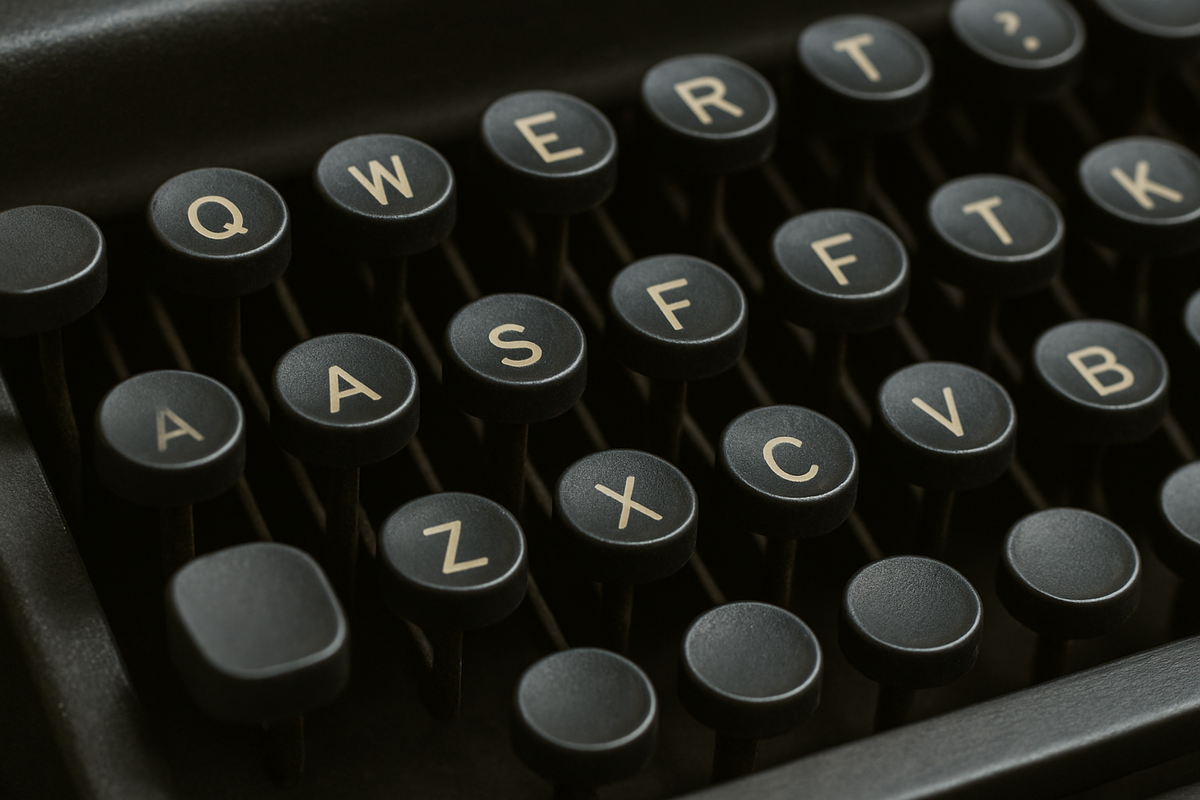
By Jenny Holly Hansen | WBN News | May 2, 2025
Every day, I tap away at my keyboard without really thinking about it. My fingers automatically find the letters, glide from key to key, and shape my thoughts into words. But one day, I caught myself wondering—why are the keys arranged this way? Why Q-W-E-R-T-Y, and not something more logical or alphabetical?
As it turns out, the story behind the QWERTY keyboard is both surprising and a fascinating example of how technology evolves not because of perfect design, but because of practical problems—and a little bit of luck.
The QWERTY layout was invented in the 1870s by a man named Christopher Latham Sholes, a newspaper editor and printer from Milwaukee, Wisconsin, USA. Sholes wasn’t setting out to create the modern keyboard as we know it. He was working on an early typewriter prototype, one of many inventors in a race to build a practical writing machine.
At first, Sholes tried laying the keys out alphabetically. It made sense—people could find the letters easily. But he quickly ran into a major problem: when a typist hit two neighboring keys too fast, the mechanical arms (called typebars) would jam together. This slowed typing down significantly, which defeated the purpose of the machine.
To fix this, Sholes and his colleagues did something that seems counterintuitive: they deliberately made typing harder. They spread out commonly used letter pairs so that the typebars were less likely to clash. For example, "T" and "H," which are often used together, were positioned far apart.
The result was a strange, scattered arrangement—QWERTY.
It might have stayed a quirky footnote in history if not for the Remington Company, a major firearms and sewing machine manufacturer. They bought the rights to Sholes’s typewriter design and mass-produced it, using the QWERTY layout. Remington’s marketing power and distribution reach meant that this layout quickly became the industry standard.
Even as typewriters evolved and new technologies like the electric typewriter—and later computers—eliminated the original problem of jamming typebars, QWERTY stuck. People had already learned to type on it. Schools taught it. Businesses required it. In short, momentum carried QWERTY forward into the digital age.
Today, there are technically "better" keyboard layouts out there. Systems like Dvorak and Colemak are designed to be faster and more ergonomic. But despite their advantages, none have managed to unseat QWERTY. It’s a powerful reminder that sometimes, the things we use every day aren't the products of perfect design, but of practical necessity—and once something becomes a habit, it’s incredibly hard to change.
Now, every time my fingers dance across my keyboard, I have a little more appreciation for the history under my fingertips. It’s not just about letters and keys—it's about human ingenuity, adaptation, and the strange ways that progress moves forward.
Let’s Keep Talking:
Jenny is a business insurance broker with Waypoint Insurance.
She is also a business development consultant with Impresario Partners, helping Canadian Business expand overseas.
She can be reached at 604-317-6755 or jholly-hansen@wbnn.news. Connect with Jenny on LinkedIn at https://www.linkedin.com/in/jenny-holly-hansen-365b691b/. Connect with Jenny at BlueSky: https://bsky.app/profile/jennyhollyhansen.bsky.social
Let’s Meet Up:
Jenny Holly Hansen is a cohost with Chris Sturges of the Langley Impact Networking Group. You are welcome to join us on Thursday’s from 4pm to 6pm at: Sidebar Bar and Grill: 100b - 20018 83A Avenue, Langley, BC V2Y 3R4
TAGS: #Jenny Holly Hansen #QWERT Keyboard #Christopher Latham Sholes #Milwaukee, Wisconsin, USA



